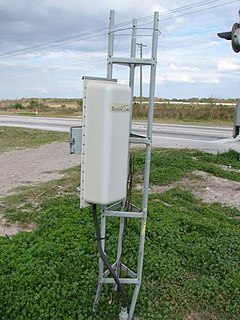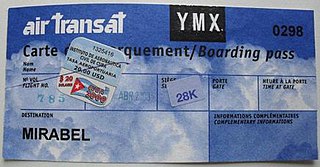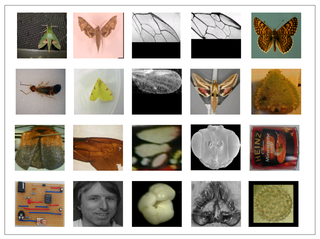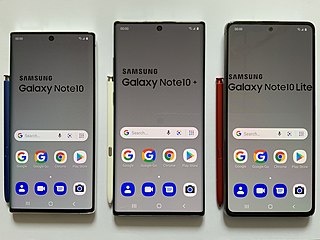 W
WThe Auto-ID Labs network is a research group in the field of networked radio-frequency identification (RFID) and emerging sensing technologies. The labs consist of seven research universities located on four different continents. These institutions were chosen by the former Auto-ID Center to design the architecture for the Internet of Things together with EPCglobal. The federation was established in 1999; the network they have developed is at the heart of a proposal sponsored by EPCglobal and supported by GS1, GS1 US, Wal-Mart, Hewlett-Packard, and others to use RFID and the Electronic Product Code (EPC) in the identification of items in the supply chain for companies. The areas of expertise range from hardware to software to business research related to RFID.
 W
WAutomatic equipment identification (AEI) is an electronic recognition system in use with the North American railroad industry. Consisting of passive tags mounted on each side of rolling stock and active trackside readers, AEI uses RF technology to identify railroad equipment while en route.
 W
WAutomatic number-plate recognition is a technology that uses optical character recognition on images to read vehicle registration plates to create vehicle location data. It can use existing closed-circuit television, road-rule enforcement cameras, or cameras specifically designed for the task. ANPR is used by police forces around the world for law enforcement purposes, including to check if a vehicle is registered or licensed. It is also used for electronic toll collection on pay-per-use roads and as a method of cataloguing the movements of traffic, for example by highways agencies.
 W
WA barcode or bar code is a method of representing data in a visual, machine-readable form. Initially, barcodes represented data by varying the widths and spacings of parallel lines. These barcodes, now commonly referred to as linear or one-dimensional (1D), can be scanned by special optical scanners, called barcode readers. Later, two-dimensional (2D) variants were developed, using rectangles, dots, hexagons and other geometric patterns, called matrix codes or 2D barcodes, although they do not use bars as such. 2D barcodes can be read or deconstructed using application software on mobile devices with inbuilt cameras, such as smartphones.
 W
WA barcode printer is a computer peripheral for printing barcode labels or tags that can be attached to, or printed directly on, physical objects. Barcode printers are commonly used to label cartons before shipment, or to label retail items with UPCs or EANs.
 W
WA barcode reader is an optical scanner that can read printed barcodes, decode the data contained in the barcode and send the data to a computer. Like a flatbed scanner, it consists of a light source, a lens and a light sensor translating for optical impulses into electrical signals. Additionally, nearly all barcode readers contain decoder circuitry that can analyze the barcode's image data provided by the sensor and sending the barcode's content to the scanner's output port.
 W
WThe application Barcode Scanner is an Android app, from the open-source project ZXing, that allows an Android device with imaging hardware to scan barcodes or 2-D 2D graphical barcodes and retrieve the data encoded. Information encoded often includes web addresses, geographical coordinates, and small pieces of text, in addition to commercial product codes. This Android-based system has similar functionality to a hardware barcode reader.
 W
WA barcode system is a network of hardware and software, consisting primarily of mobile computers, printers, handheld scanners, infrastructure, and supporting software. Barcode systems are used to automate data collection where hand recording is neither timely or cost effective. Barcoding systems are not radio-frequency identification (RFID) systems even though the companies that provide barcode equipment will often also provide RFID equipment and many companies use both technologies as part of larger resource management systems.
 W
WA boarding pass or boarding card is a document provided by an airline during check-in, giving a passenger permission to enter the restricted area of an airport and to board the airplane for a particular flight. At a minimum, it identifies the passenger, the flight number, and the date and scheduled time for departure. A boarding pass may also indicate details of the perks a passenger is entitled to and is thus presented at the entrance of such facilities to show eligibility.
 W
WA bokode is a type of data tag which holds much more information than a barcode over the same area. They were developed by a team led by Ramesh Raskar at the MIT Media Lab. The bokode pattern is a tiled series of Data Matrix codes. The name is a portmanteau of the words bokeh—a photographic term—and barcode. Rewritable bokodes are called bocodes. They are circular with a diameter of 3 millimetres (0.12 in). A bokode consists of an LED covered with a photomask and a lens. They are readable from different angles and from 4 metres (13 ft) away by any standard digital camera. Powered bokodes are relatively expensive because of the LED and the power it requires. However, prototypes have been developed which function passively with reflected light like a typical barcode.
 W
WCodablock is a family of stacked 1D barcodes which was invented in Identcode Systeme GmbH in Germany in 1989 by Heinrich Oehlmann. Codablock barcodes are based on stacked Code 39 and Code 128 symbologies and have some advantages of 2D barcodes.
 W
WDigital automated identification system (DAISY) is an automated species identification system optimised for the rapid screening of invertebrates by non-experts.
 W
WDirection finding (DF), or radio direction finding (RDF), is the measurement of the direction from which a received signal was transmitted. This can refer to radio or other forms of wireless communication, including radar signals detection and monitoring (ELINT/ESM). By combining the direction information from two or more suitably spaced receivers, the source of a transmission may be located via triangulation. Radio direction finding is used in the navigation of ships and aircraft, to locate emergency transmitters for search and rescue, for tracking wildlife, and to locate illegal or interfering transmitters. RDF was important in combating German threats during both the World War II Battle of Britain and the long running Battle of the Atlantic. In the former, the Air Ministry also used RDF to locate its own fighter groups and vector them to detected German raids.
 W
WA facial recognition system is a technology capable of matching a human face from a digital image or a video frame against a database of faces, typically employed to authenticate users through ID verification services, works by pinpointing and measuring facial features from a given image.
 W
WiBeacon is a protocol developed by Apple and introduced at the Apple Worldwide Developers Conference in 2013. Various vendors have since made iBeacon-compatible hardware transmitters – typically called beacons – a class of Bluetooth Low Energy (BLE) devices that broadcast their identifier to nearby portable electronic devices. The technology enables smartphones, tablets and other devices to perform actions when in proximity to an iBeacon.
 W
WImpinj, Inc. is a manufacturer of radio-frequency identification (RFID) devices and software. The company was founded in 2000 and is headquartered in Seattle, Washington. The company was started based on the research done at the California Institute of Technology by Carver Mead and Chris Diorio. Impinj currently produces EPC Class 1, Gen 2 passive UHF RFID chips, RFID readers, RFID reader chips, and RFID antennas, and software applications for encoding chips, and gathering business intelligence on RFID systems.
 W
WITF-6 is the implementation of an Interleaved 2 of 5 (ITF) barcode to encode a addon to ITF-14 and ITF-16 barcodes. Originally was developed as a part of JIS specification for Physical Distribution Center. Instead of ITF-14, it wasn’t standardized by ISO Committee but it is widely used to encode additional data to Global Trade Item Number such as items quantity or container weight.
 W
WA Kimball tag was a cardboard tag that included both human and machine-readable data to support punched card processing. A Kimball tag was an early form of stock control label that, like its later successor the barcode, supported back office data processing functions. They were predominantly used by the retail clothing ("fashion") industry.
 W
WMagnetic ink character recognition code, known in short as MICR code, is a character recognition technology used mainly by the banking industry to streamline the processing and clearance of cheques and other documents. MICR encoding, called the MICR line, is at the bottom of cheques and other vouchers and typically includes the document-type indicator, bank code, bank account number, cheque number, cheque amount, and a control indicator. The format for the bank code and bank account number is country-specific.
 W
WMatrix 2 of 5 is a variable length, discrete, two width symbology. Matrix 2 of 5 is a subset of two-out-of-five codes. Unlike Industrial 2 of 5 code, Matrix 2 of 5 can encode data not only with black bars but with white spaces.
 W
WMeCard is a data file similar to vCard but used by NTT DoCoMo in Japan in QR code format for use with Cellular Phones.
 W
WMobile computing is human–computer interaction in which a computer is expected to be transported during normal usage, which allows for the transmission of data, voice, and video. Mobile computing involves mobile communication, mobile hardware, and mobile software. Communication issues include ad hoc networks and infrastructure networks as well as communication properties, protocols, data formats, and concrete technologies. Hardware includes mobile devices or device components. Mobile software deals with the characteristics and requirements of mobile applications.
 W
WOmni-ID is a vendor of passive UHF Radio-frequency identification (RFID) tags. Founded in 2007 as Omni-ID, Ltd., its products are a range of RFID tags designed to operate in all environments, including on metal and liquids.
 W
WOptical braille recognition is the act of capturing and processing images of braille characters into natural language characters. It is used to convert braille documents for people who cannot read them into text, and for preservation and reproduction of the documents.
 W
WOptical character recognition or optical character reader (OCR) is the electronic or mechanical conversion of images of typed, handwritten or printed text into machine-encoded text, whether from a scanned document, a photo of a document, a scene-photo or from subtitle text superimposed on an image.
 W
WOtter.ai is a Los Altos, California-based technology company that develops speech to text transcription applications using artificial intelligence and machine learning. Its software, called Otter, shows captions for live speakers, and generates written transcriptions of the speeches.
 W
WA QR code is a type of matrix barcode first designed in 1994 for the automotive industry in Japan. A barcode is a machine-readable optical label that contains information about the item to which it is attached. In practice, QR codes often contain data for a locator, identifier, or tracker that points to a website or application. A QR code uses four standardized encoding modes to store data efficiently; extensions may also be used.
 W
WRoper Technologies, Inc. is an American diversified industrial company that produces engineered products for global niche markets. The company is headquartered in Sarasota, Florida.
 W
WSymbolically Isolated Linguistically Variable Intelligence Algorithms, or more popularly known as SILVIA, is a core platform technology developed by Cognitive Code. SILVIA was developed, and designed to recognize and interpret speech, text, and interact with applications and operating systems, all while interacting with a user. The technology can be run and operate via cloud, a mobile application, a part of network, or via server.
 W
WA SPARQCode is a matrix code encoding standard that is based on the physical QR Code definition created by Japanese corporation Denso-Wave.
 W
WTouch Memory is an electronic identification device packaged in a coin-shaped stainless steel container. Touch memory is accessed when a touch probe comes into contact with a memory button.
 W
WA U-Key is an implementation of the MIFARE RFID chip, encased in a plastic key style housing. It is used as a prepayment system on vending machines and for some self-service diving air compressors in Switzerland
 W
WUltrasound Identification is a real-time locating system (RTLS) or indoor positioning system (IPS) technology used to automatically determine and identify the location of objects with room accuracy.